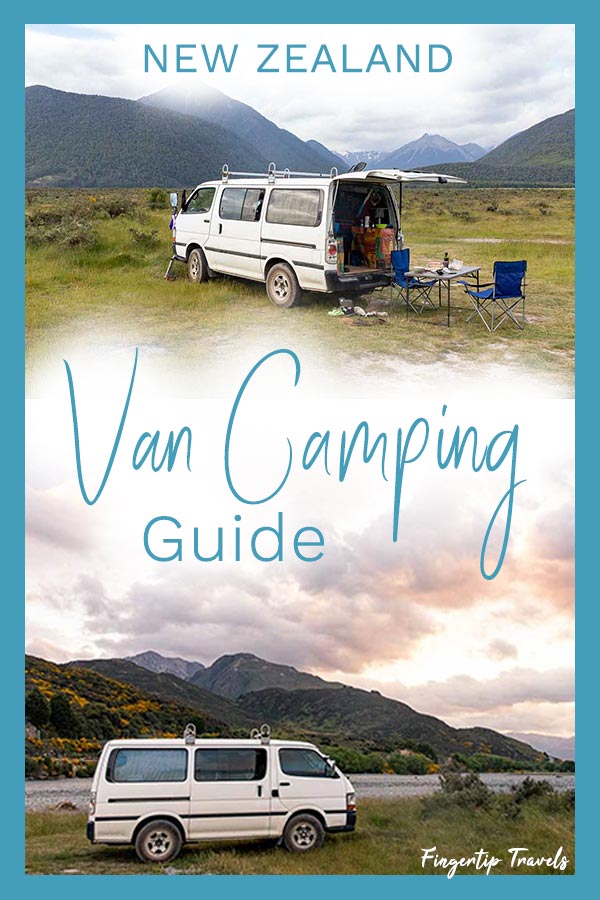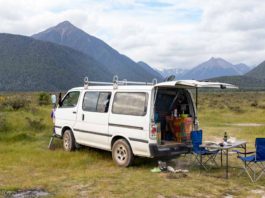In our year in New Zealand, my fiance and I lived and traveled in our self contained van for seven months. As such, I’m very familiar with van camping in New Zealand.
I’ve stayed the night anywhere from beautiful holiday parks with mountain views and hot tubs to remote free camp sites all over New Zealand.
This guide to van camping in New Zealand will start with the frequently asked questions to get you oriented. After that I will discuss the different kinds of camping in New Zealand: freedom camping (my favorite kind!), DOC campsites, private campgrounds and locations, and holiday parks.
Van Camping in New Zealand
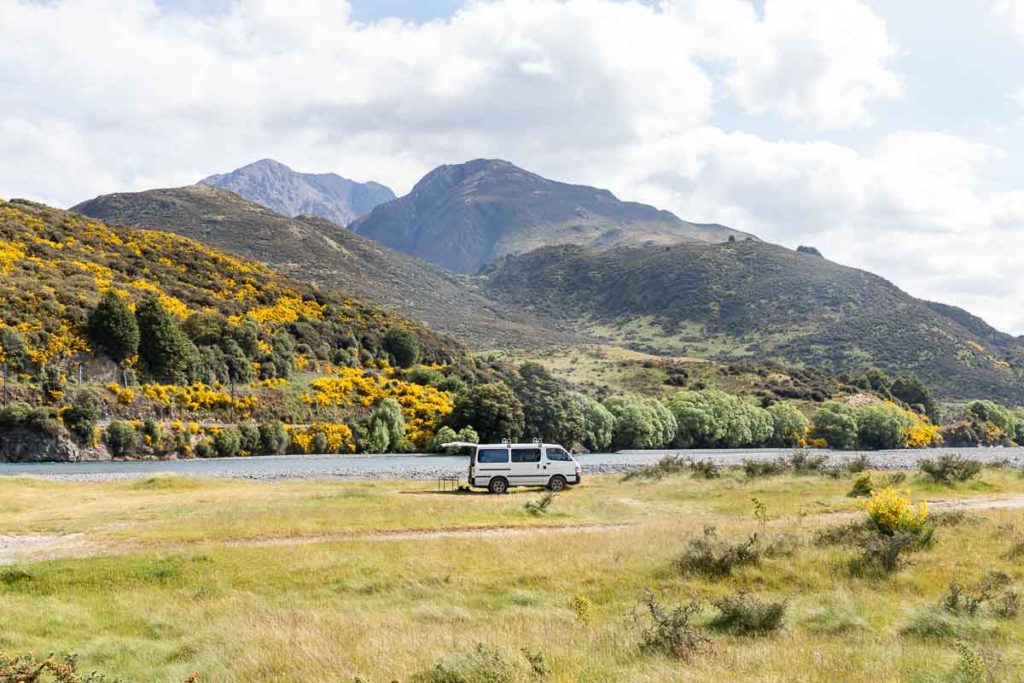
Before we came to New Zealand, we had the vague idea to buy a van to sleep and travel in on our New Zealand adventure. When we arrived, we realized how popular that idea is! I wasn’t so unique and special after all, which was excellent news: since van camping in New Zealand is so popular, there are a lot of resources available.
Buying a van was relatively easy, and there were many vans that already came with everything you need to live in them! For more information on buying a van in New Zealand, including all the logistics, what to look for, van setups, and other van buying tips, check out my guide here.
Since so many people camp in their van in New Zealand, there are also many campgrounds and locations available all over the country, and at all different budgets.
Can You Sleep in Your Car in New Zealand?

Yes, you can sleep in your car in New Zealand! In fact, it’s a very popular way to travel around and see the country.
I recommend getting a van for a bit more room and a more functional, livable space. That doesn’t mean a giant RV: our van was small enough to fit into any parking space we wanted. That said, we met plenty of people who traveled around New Zealand and slept in a regular car with a mattress in the back. They were happy with their setup!
If you want to camp for free, however, make sure you get a self-contained vehicle.
What is a Self-Contained Vehicle?
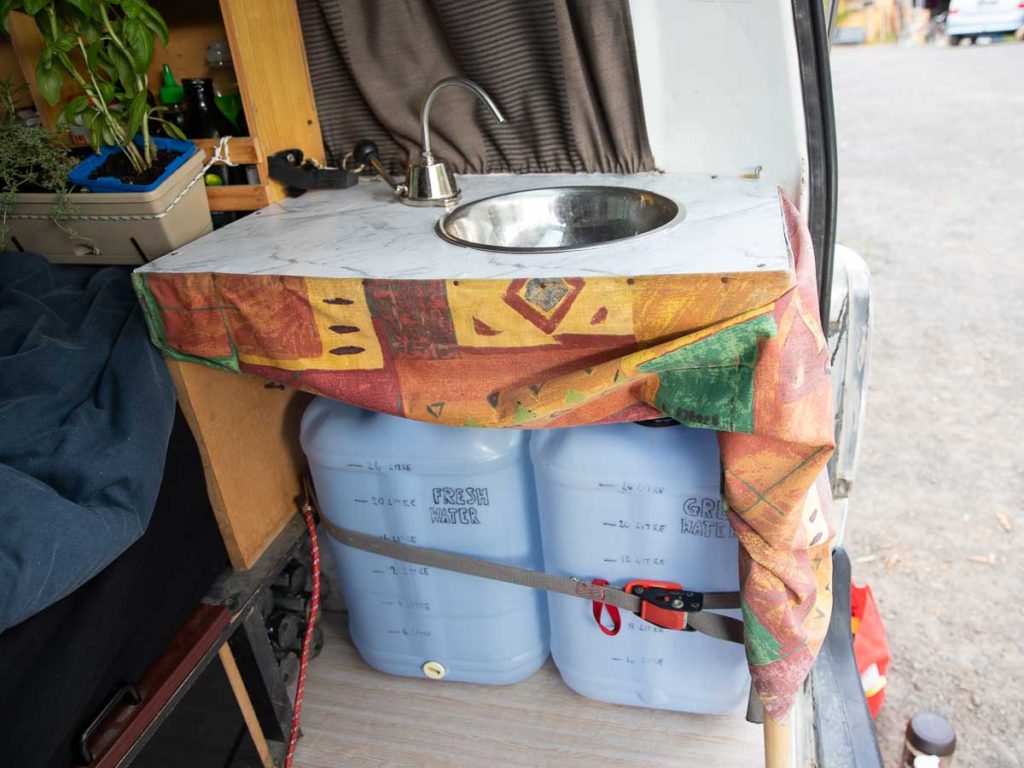
A Self-Contained vehicle is a car, van, campervan, etc, that you can live in for three days without getting more water or dumping any waste. (Source)
It has to have:
- A fresh water tank with 12L of water per person
- A grey water tank (waste water) with 12L per person
- A sink connected to the water-tight grey water tank
- A trash can with a lid
- A toilet, 3L per person
Vans that are self-contained have to have a self-containment certification. The main advantage of this is that self-contained vehicles are allowed to ‘freedom camp,’ or camp for free on some public land in New Zealand. More on that below.
What Are the Camping Rules in New Zealand?
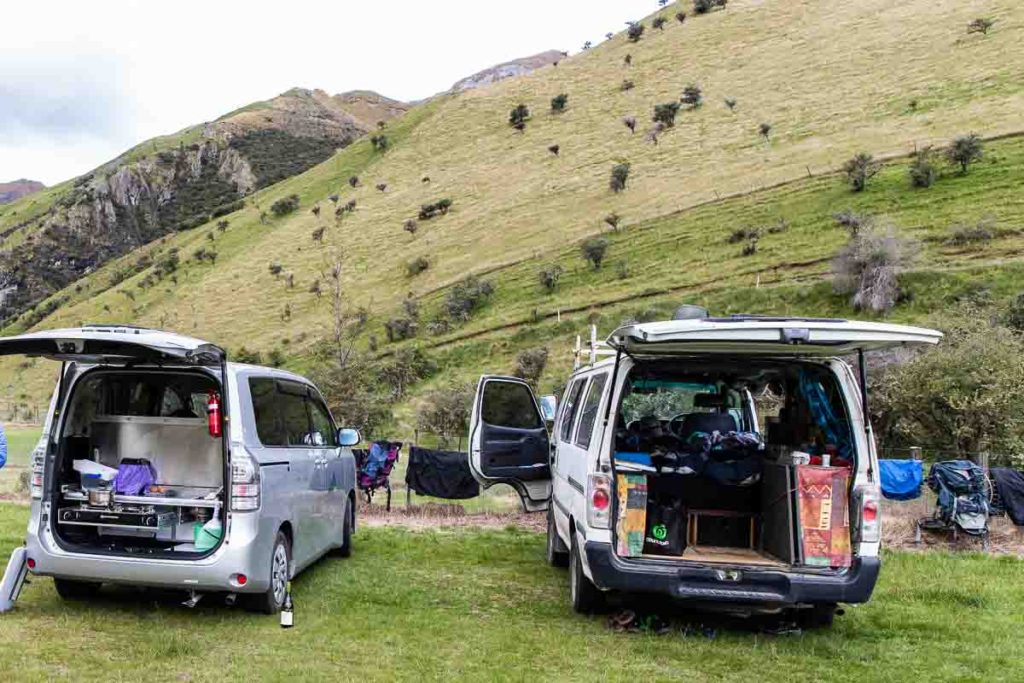
If staying at a campground, these will depend on the campsite. Rules can include quiet hours, facility hours, checkout times, etc. In general, clean up after yourself and be respectful of the other guests.
For freedom camping, leave no trace! The DOC says this simply: carry in, carry out. To expand on that:
- Don’t leave any trash or food scraps behind.
- Don’t poop or pee outside of a toilet!
- Don’t pour your soapy dish water on the ground
- Don’t wash your dishes in a river or lake! (I’ve seen this, don’t be that guy)
Read on for the rules of where you are allowed to freedom camp in New Zealand.
Can You Camp Anywhere in New Zealand?
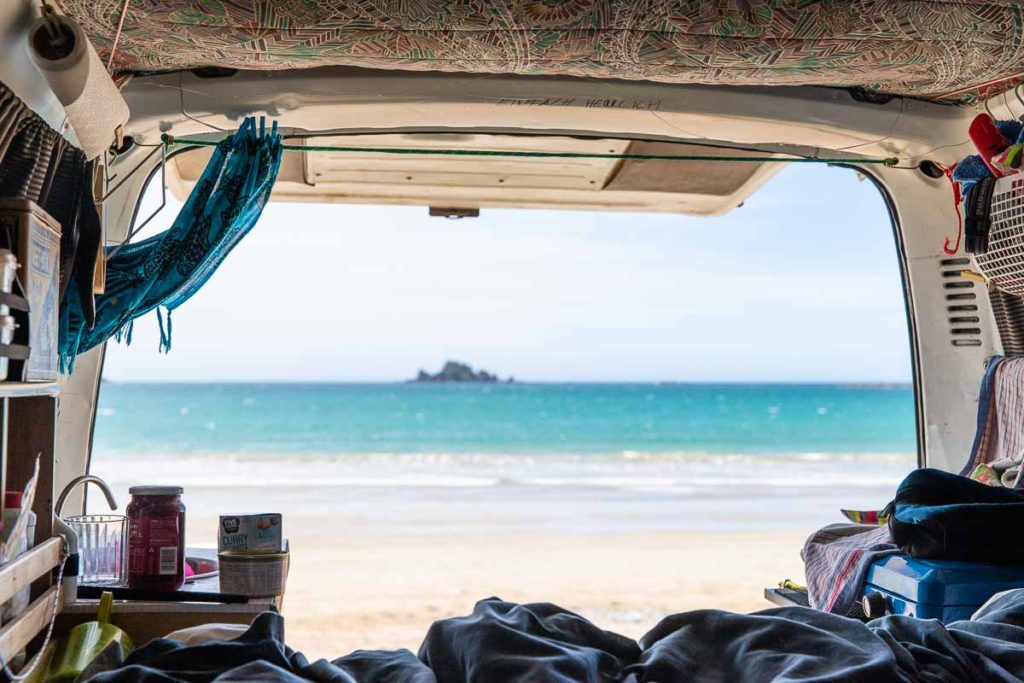
No! There are different rules and regulations depending on your location, and if your vehicle is self-contained or not.
In general, non self-contained vehicles need to camp in designated campgrounds. This is not necessarily a huge bummer: there are many beautiful and cheap campgrounds across New Zealand. I’ll discuss them below.
Self-contained vehicles can freedom camp – camp for free – on some public land. Each district has its own bylaws on freedom camping. You can find links to many of the district council freedom camping bylaws here. Otherwise just google ‘[your location] freedom camping rules.’
How to Find Camp Sites in New Zealand?
The best way to find camp sites (including freedom camping locations) in New Zealand is through camping apps.
I have three favorite apps for camping in New Zealand:
- WikiCamps
- CamperMate
- Rankers
I have a blog post about my nine favorite apps for traveling in New Zealand, including camping apps. I discuss the pros and cons of each camping app, as well as how I use each app to find campgrounds and freedom camping locations, here.
How Safe is Camping in New Zealand?
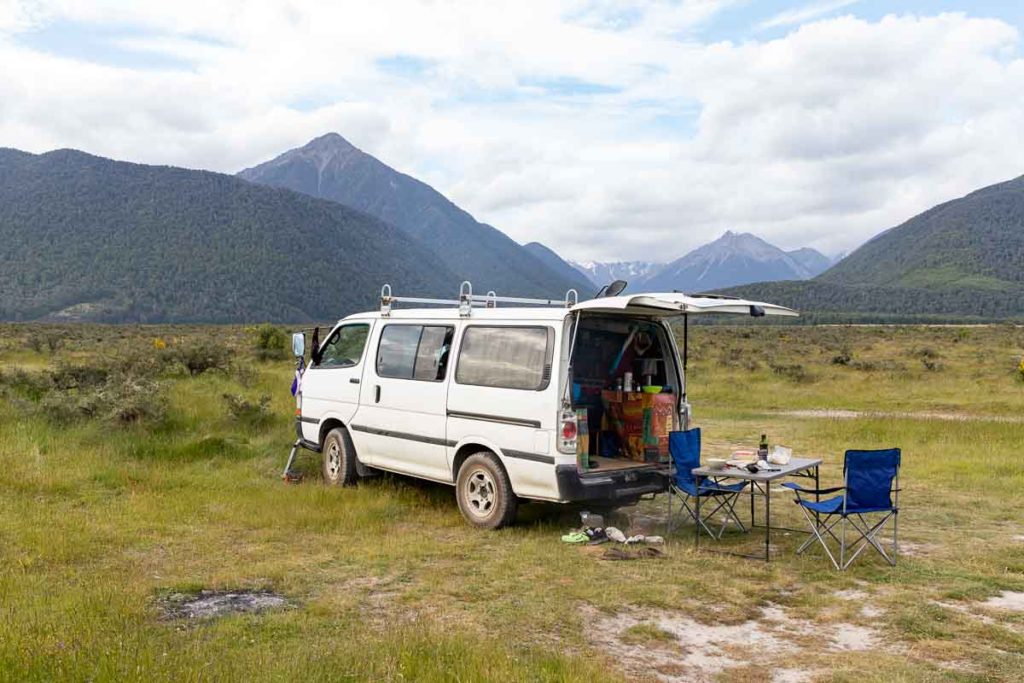
In seven months of camping in New Zealand, I’ve only had a handful of camping experiences that made me feel unsafe. All of those experiences were in freedom camping locations, often in cities.
The campgrounds in New Zealand are incredibly safe. I’ve never, not once, felt unsafe going to the bathroom at night at a campground in New Zealand.
Although most freedom camping spots in New Zealand were awesome and felt really safe, a couple of times I’ve felt unsafe at a freedom camping spot. Most of those spots were in cities where there was some animosity towards freedom campers.
Although most freedom campers, in my experience, are responsible and respectful, there’s a minority that leave trash around or shit on the beach. That gives us a bad name, and some locals are angry and don’t want us there.
I can usually identify these locations by reading the reviews that people leave on the camping apps that I discuss above. Depending on your priorities, sometimes it can be better to pay for a campsite than immerse yourself in the bad vibes.
Freedom Camping in New Zealand
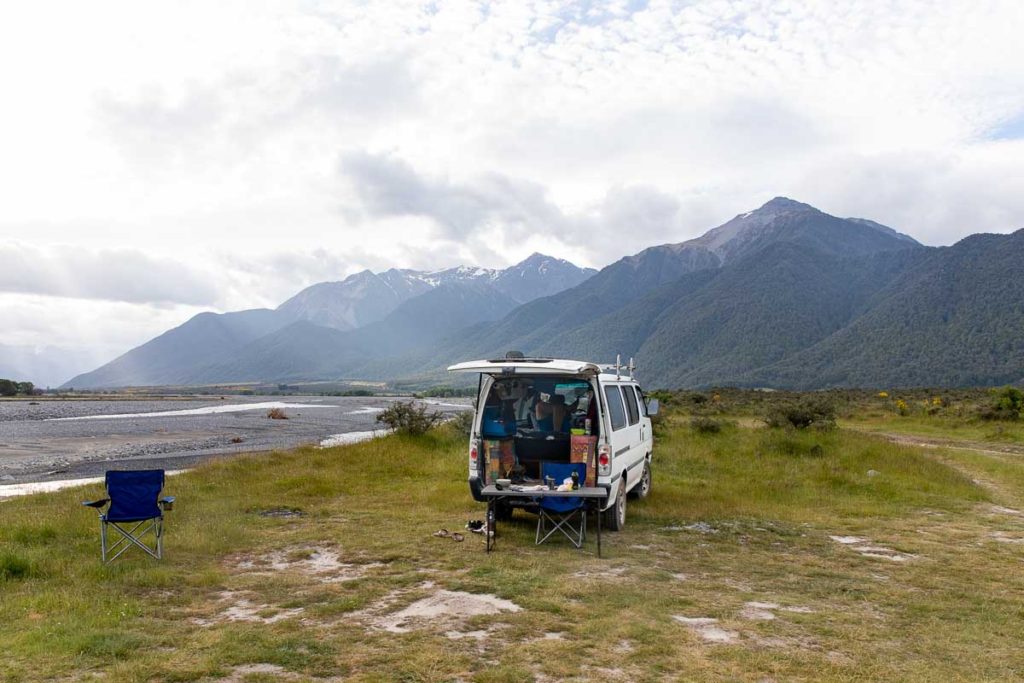
Freedom camping is camping for free on public land in New Zealand. You must have a self-contained vehicle in order to freedom camp.
As discussed above, each district has their own rules about freedom camping. Although I would occasionally check the rules for a specific area (links to rules of many New Zealand district freedom camping bylaws here), I usually would just use my New Zealand camping apps to find freedom camping spots. The apps already take the rules into account.
Freedom camping locations can differ substantially. Some are literally parking lots in the middle of a town. Others just remote beaches with a drop toilet. Others still have flush toilets and showers (although these are really rare)!
Really touristy locations often have a shortage of freedom camping locations. Make sure to scope out the locations ahead of time and plan your trip accordingly. Read the descriptions of the locations as well as the comments: often there’s only four or five sites available, and they’re already taken by 4pm. Other times you have to drive out of town for a bit to find free camping.
On the whole, I had an amazing experience freedom camping in New Zealand! We saved a bunch of money and saw many off the beaten track places we might not have otherwise. I strongly recommend giving it a try!
For more inspiration, check out my lists of the best freedom camping spots on the North and South Island!
Freedom Camping Tips
- You must have a self contained vehicle to freedom camp in New Zealand.
- Freedom camping in touristy locations is really competitive. (Eg Coromandel Peninsula or Bay of Islands). Get to a spot early (before 4 pm)!
- There isn’t a lot of freedom camping in the bigger cities. You’ll have to drive to the outskirts (or farther) of Auckland, Wellington, Christchurch, and Queenstown to find freedom camping locations.
- There’s often a limit to how many nights you can stay at a freedom camping site. They do check this in most popular locations.
- Read the reviews other travelers wrote on camping apps! You can get useful information like toilets closing at night, limits on number of cars, or unfriendly locals.
- Sometimes there’s hostility and resentment towards freedom campers from locals. This can stem from irresponsible freedom campers leaving behind trash or waste. Leave absolutely no trace to help this problem!
- Sometimes it’s better to avoid freedom camping spots that have bad vibes with the locals: it can be an unpleasant experience for all parties involved.
- Talk to other freedom campers! I was surprised by how many travelers stuck to themselves and their van, even while parked right next us. Most were happy to socialize, but didn’t initiate. Often you’ll get tips of great freedom camping spots.
DOC Campsites
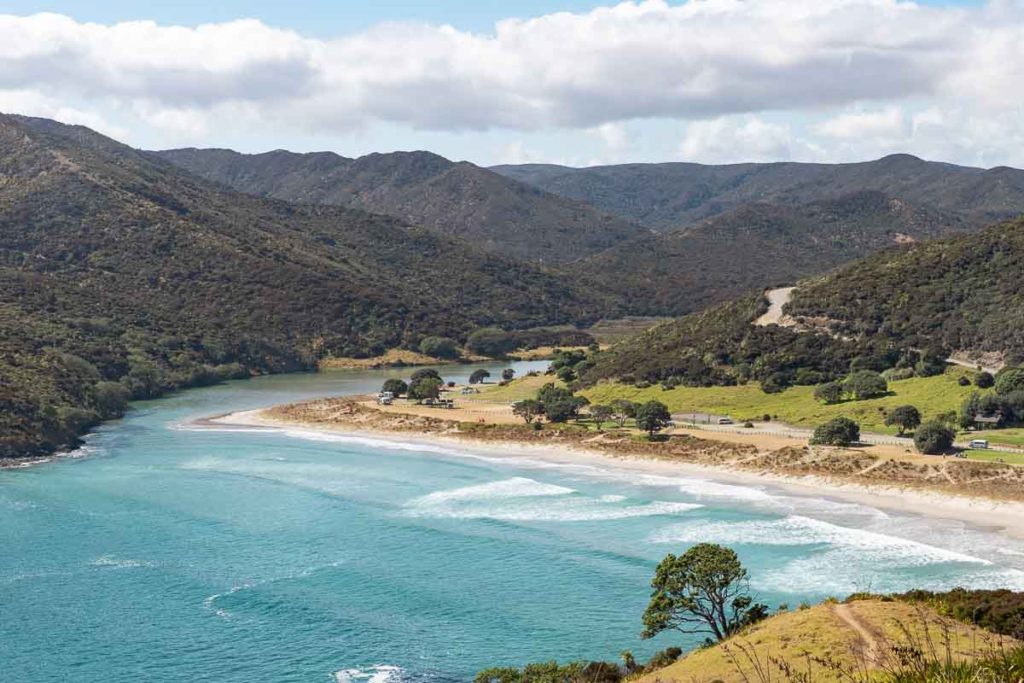
The Department of Conservation manages campsites all over New Zealand. DOC Campsites page here. These are often in beautiful locations, and can range in price depending on the facilities provided.
The campgrounds vary in price from $20 NZD per person per night, to basic free sites. Usually we stayed in Standard Campsites for $8 NZD per person per night.
You can sleep in your vehicle, or set up a tent. DOC campsites are a great, affordable option weather you have a self-contained van or not.
My favorite way to find DOC campsites is through camping apps. On WikiCamps, you can filter by ‘Requires Department of Conservation.’ On CamperMate, select ‘All Campgrounds:’ on the map, the blue markers will be campsites managed by the DOC.
The types of DOC Campsites are:
- Serviced Campsites: $20 NZD per adult. Can include flush toilets, tap water (not always drinking), cooking facilities, showers, trash, bbqs, etc.
- Scenic Campsites: $15 NZD per adult. Include a beautiful location, toilets, water (not always drinking), and sometimes showers, cooking facilities, bbqs, etc.
- Standard Campsites: $8 NZD per adult. Same as Scenic Campsites, but in a less scenic/popular location.
- Basic Campsites: Free! Include basic toilets and some source of water.
- Backcountry and Great Walk Campsites: Prices vary. Campsites in the backcountry are not accessible with your vehicle. They are awesome, but you must hike there!
DOC campsites are a fun, affordable way to see New Zealand. Some of the most beautiful campsites in New Zealand are DOC campsites, and I absolutely recommend checking them out.
Private Campgrounds
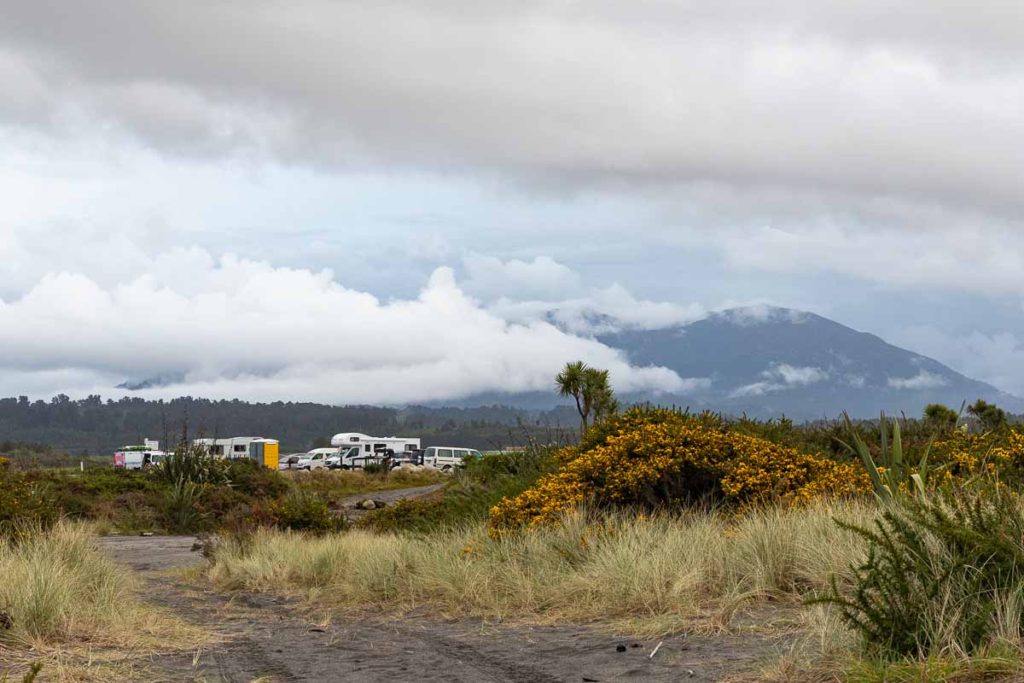
There are also private campgrounds in New Zealand, as well as non traditional camping locations.
There are many campgrounds in New Zealand that are not managed by the DOC. These vary in quality, but are usually decent and cheap! Many of them cost $10-$15 per adult. Facilities are usually rudimentary but sufficient, there was a lot of variety in these sites as well.
Many lodges, hostels, farms, pubs, and restaurants also offer camping for vans. These are interesting places to stay, because often you get to talk to the local New Zealand owners. They tend to be affordable, and often you can even use the kitchen and showers inside.
I definitely recommend keeping your mind open when it comes to van camping. I loved camping behind a pub around Rotorua, and on farms near Omarama and the Bay of Islands. It’s a really unique experience, and a cool way to meet interesting people on your travels.
Holiday Parks
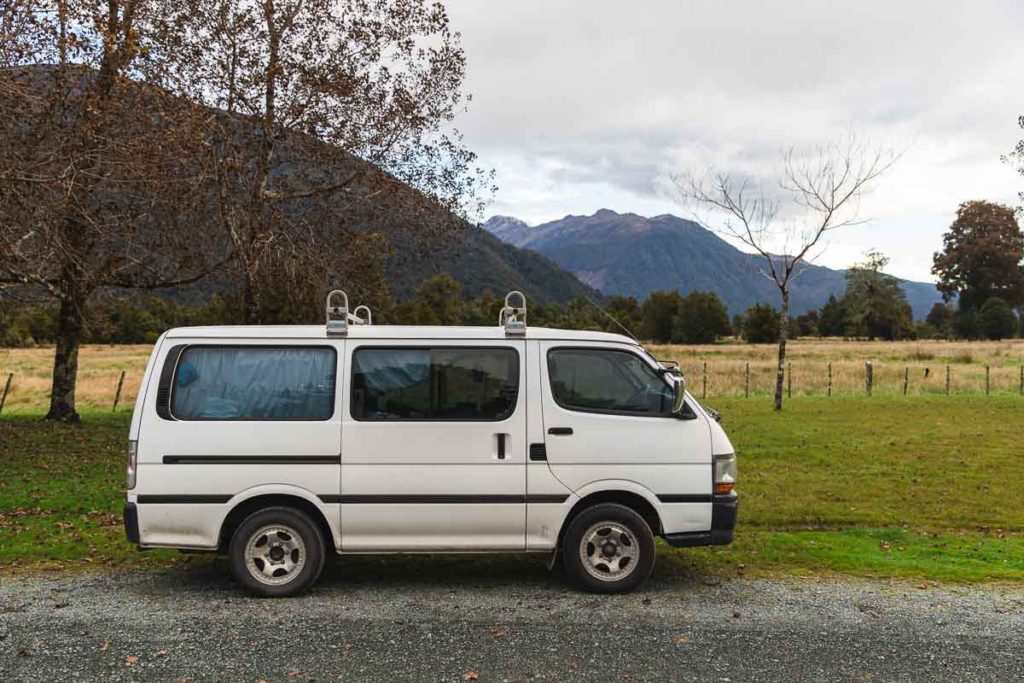
What is a Holiday Park?
A holiday park in New Zealand is a really nice campground with many useful facilities together in one place. They are the most expensive type of camping in New Zealand. On our trip through New Zealand, we’d stay in these sparingly. They’re great if you need a break, really want a super hot shower, or are in a touristy location with not many other options. Don’t get me wrong, I love holiday parks, it just wasn’t in our budget to stay in them often.
Holiday parks will have flush toilets, hot showers, and a communal kitchen, often with pots, pans, utensils, and a fridge. There’s often a laundry room, a TV/recreation room, a playground, a BBQ area, and a dump and drinking water refill station. Communal herb gardens are popular!
Holiday parks are really nice, and really convenient. They usually cost $17 per adult, although prices vary depending on the park.
Should You Get a Top 10 Membership?
Top 10 Holiday Park Group is an association of holiday parks all over New Zealand. (There are now much more than 10). They have a good reputation, and a park must meet certain standards to be admitted. You know pretty much what to expect when going to a Top 10 Holiday Park, which can be nice after a long and tiring day.
You can get a Top 10 membership for $49 NZD that is valid for 2 years. The membership grants you 10% off Top 10 Holiday parks, as well as discounts on many tourist activities and restaurants in New Zealand.
I’ll be honest: I was against getting a membership, but my fiance thought we should get one and he won. This made me jealously keep track of everything the card saved us so that I could ‘told you so’ a year later. (I play the long game).
Well… I was wrong. The Top 10 membership card saved us $60 NZD in a year. ($109 total savings, minus $49 initial investment) The key is to ask at every tourist activity if they have a Top 10 discount. I asked every time, and often they would have one. It just wasn’t advertised properly.
Activities like kayaking, wildlife tours, entrance fees to geologic wonders, even Hobbiton, all have Top 10 discounts. If you do some touristy activities, plus occasionally stay at a Top 10 holiday park, plus ask if the pubs or restaurants around the holiday park have a discount… then it’s actually quite likely that you’ll save money with a Top 10 membership. Color me surprised!
Final Thoughts
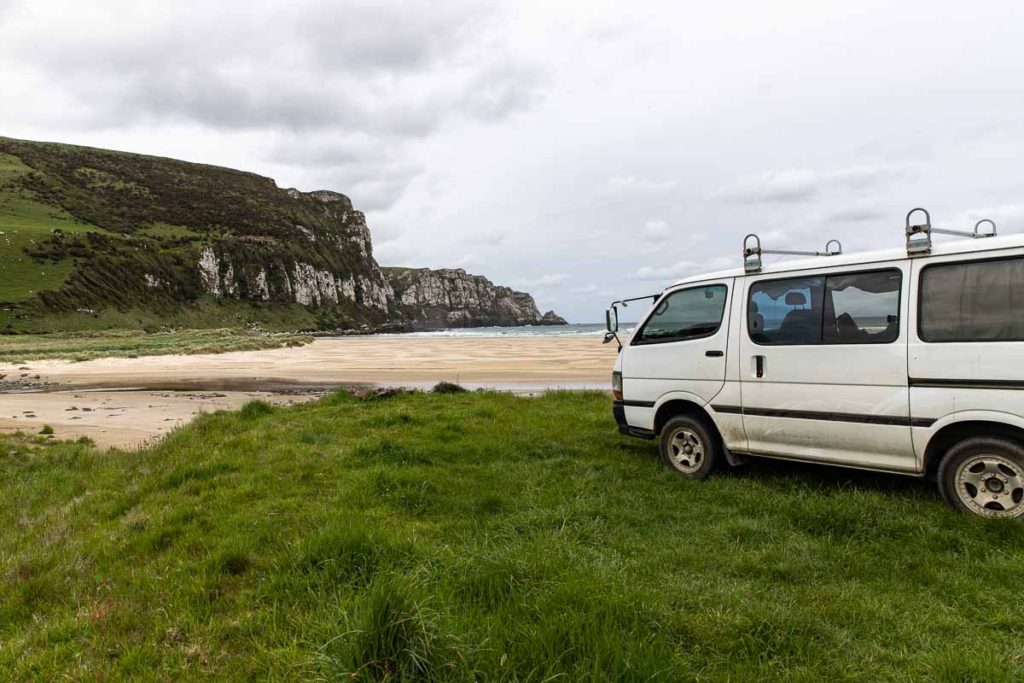
In this blog post I’ve discusses the different kinds of van camping in New Zealand: freedom camping, DOC campgrounds, private campgrounds and nontraditional camp sites like staying at farms and pubs, and holiday parks.
In our year in New Zealand, (and seven months on the road), we stayed at all of these types of camp sites. We were on a budget, so I would say that roughly our distribution was as follows:
- 70% freedom camping spots
- 10% DOC campgrounds
- 10% private campgrounds and camp spots
- 10% holiday parks
I enjoyed all of the above!
Freedom camping was my favorite, not only because it was free, but it was also the most adventurous. I also loved DOC campsites, because they are affordable and often in gorgeous locations. Private campgrounds were a great economical option, and also often in splendid locations. Staying at private farms and pubs was a great way to talk to some interesting locals. Holiday parks often felt like a luxury, and I always felt really relaxed and pampered afterwards.
Van camping in New Zealand was an experience I look back on fondly. In my opinion it is the best way to explore New Zealand. My intent with this blog post was to elucidate all of the different van camping options in New Zealand, so you can choose the type of van camping that fits your style, budget, and preferences.
For more information about campervanning in New Zealand, check out my comprehensive guide here.
